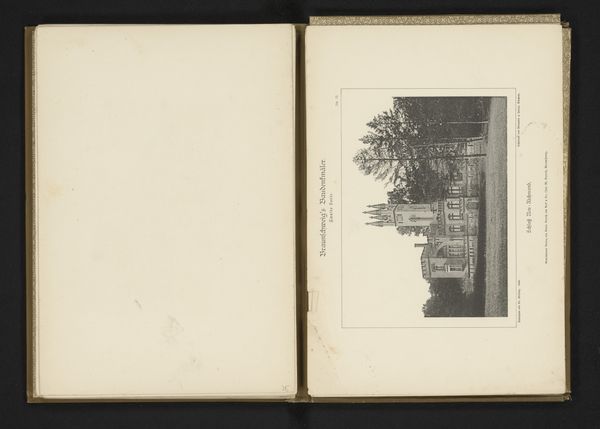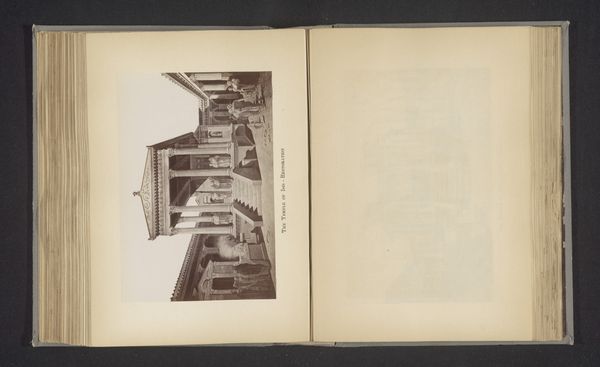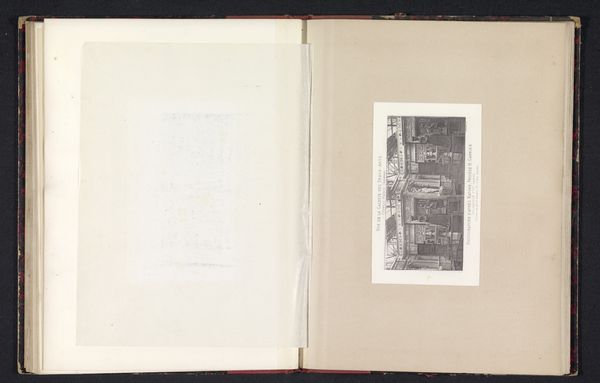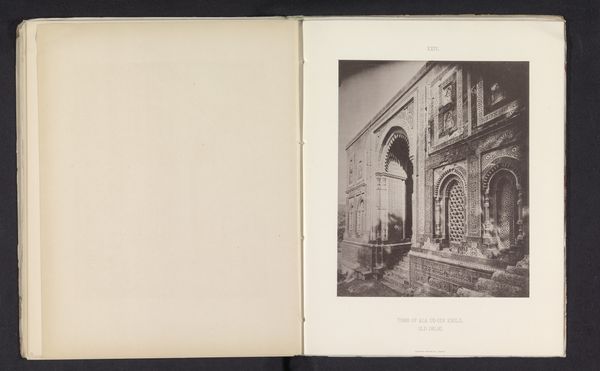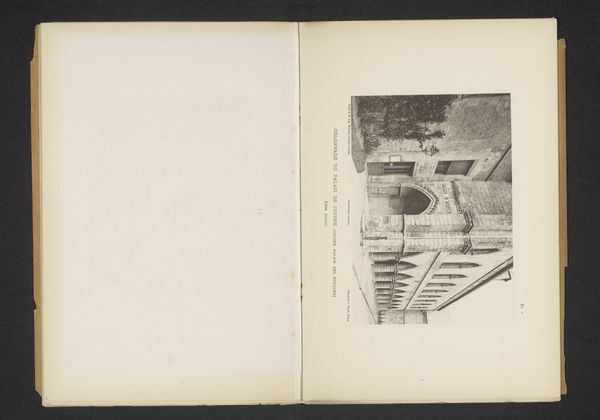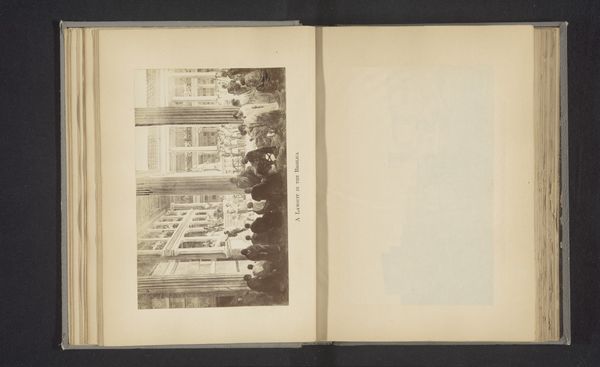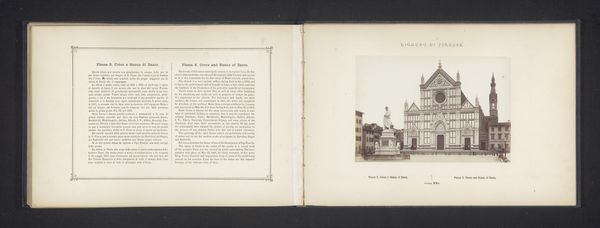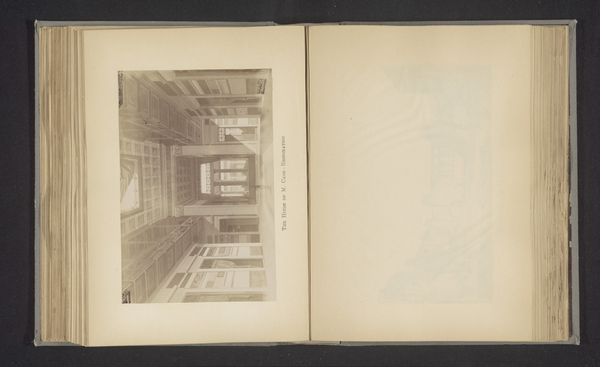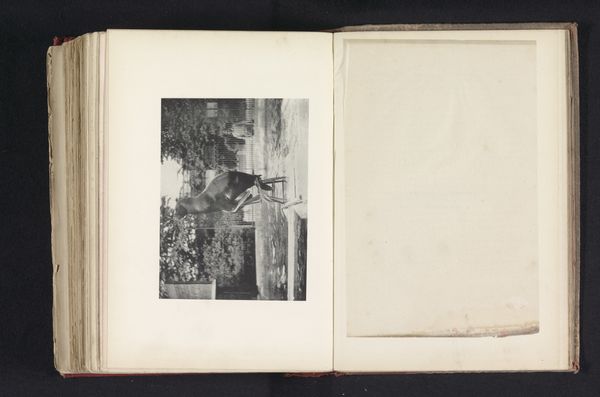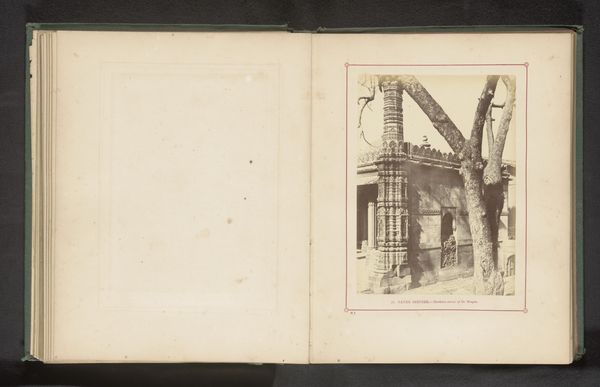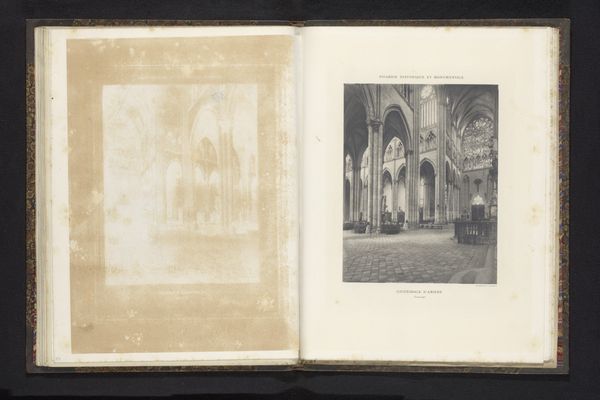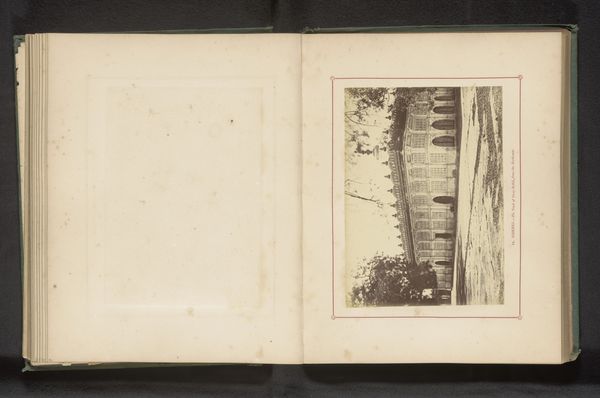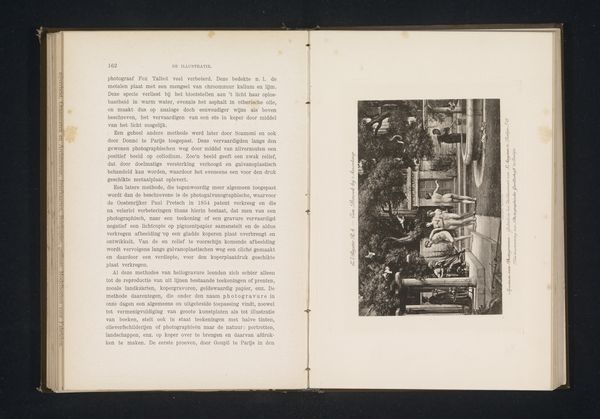
print, photography, architecture
# print
#
photography
#
cityscape
#
architecture
#
realism
Dimensions: height 207 mm, width 279 mm
Copyright: Rijks Museum: Open Domain
Curator: This image captures a black and white photographic print of houses in Leicester, dating back to before 1889. There’s a stillness, a kind of pre-industrial calm, that settles over it. Editor: It certainly strikes me as sedate, but the composition also speaks of something quite calculated. Look at the textures: the brickwork meticulously captured, the sharp contrast of light and shadow, the precision in capturing architectural details. I’d be interested in the labour involved in both creating the photograph and in constructing the buildings themselves. Curator: Indeed, it's about the way the city composes itself, brick by brick. See how the photographer has framed the buildings, leading your eye up towards the church spire in the background? It gives you a sense of reaching for something beyond the everyday, perhaps. Editor: I notice, too, how photography as a relatively new medium here has an immediate documentary function: capturing a particular moment in Leicester’s urban development, recording its physical fabric. There is also that lone figure standing there; what could be inferred by their positioning, or indeed their role? Are they of any particular socio-economic background, as they seem diminutive in the architecture before us. Curator: That lone figure... They become almost a marker of humanity against the looming structures, a hint of something fragile within this robust urban scene. Editor: The creation of architecture relies on resource extraction from various lands and raw materials from the soil; labor to build is always intrinsically tied to place. And now photographic means and mediums enable more wide-scale viewing and analysis across social, economic and cultural factors. Curator: It makes you think about all those lives lived within those walls. How do you connect a spirit, even one now ghosted away by time, into such constructions? Maybe the material tells a tale about those vanished presences. Editor: Yes. Each brick, each beam, a record, in itself a photograph developed through touch, not by light. These processes should perhaps then force one to consider modes of land ownership too? Curator: So, by delving into the texture of things, we might find an emotional geology—layer upon layer of human life fossilized into brick and stone, preserved by light and emulsion.
Comments
No comments
Be the first to comment and join the conversation on the ultimate creative platform.
